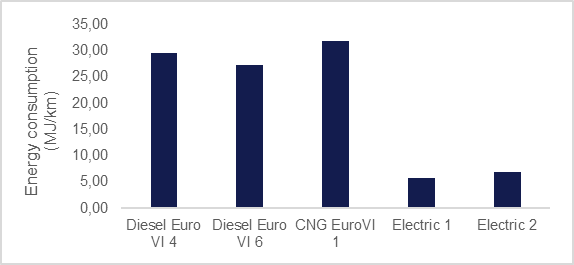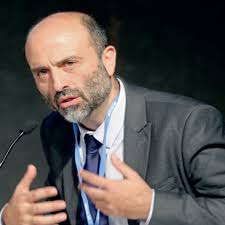Sustainable Bus Systems - Phase 2
Purpose, Objectives, and Key Question
Some cities in Latin America are facing the renewal of their bus fleets. At this time, it is essential that bus transport systems be energy efficient, low polluting, and soot-free buses. In this context, advanced technologies require an appropriate characterization of the advantages of clean and energy-efficient buses in terms of emissions, operational costs, and fuel economy. These characteristics vary, however, depending on local operating conditions, emission regulations, fuel quality, and type of service the buses provide. Verified performance data are needed, as well as test and assessment methodologies that reflect local needs and conditions.
The main objective of Task 53 was to develop a methodology for establishing requirements for clean and energy-efficient buses that can be used in the tendering process for public transportation operators in developing regions. Such a methodology includes guidance and recommendations on control and follow-up of the buses in operation. A methodology to assess emission stability over time was also considered. Only original equipment manufacturer products have been considered; retrofit solutions have not been addressed.
Activities
Activities included analysis of the performance of existing buses, evaluation of the operating conditions in pilot regions, comparison of these with existing test cycles, development of a common test methodology, execution of tests with selected fuels and vehicles, data analysis, and the development of guidelines for buses in sustainable bus transport systems. To facilitate the analysis, the project included a work exchange between European and South American researchers.
Key Findings
The buses found in different international markets may differ greatly, particularly in developing regions, hence, the importance of evaluating the operational condition of the urban bus systems in local settings (Figure 1). Regarding emissions under local conditions, a Euro VI bus measured in the TS-STGO cycle is twice as high as the results seen under the Braunschweig cycle. Furthermore, its energy consumption is higher in the TS-STGO cycle versus the Braunschweig cycle, seeing consumptions that are 60% higher for the same Euro VI diesel bus.
Battery electric buses consume less than a quarter of the energy than a diesel bus requires per kilometer under the TS-STGO cycle; however, this consumption is still higher than in other cities (Figure 2).
The report of the energy consumptions under the TS-STGO cycle will allow the fleet renewal process with Euro VI buses and the progressive introduction of battery electric buses, to produce the highest possible reductions in energy consumption and local emissions with market-ready technologies.

Fig. 1 Santiago Driving Cycle

Fig 2. Energy Consumption for Urban Buses (Santiago driving cycle, 1.4% slope)
Finally, a document was developed that describes the parameters to be considered in a methodology for establishing requirements for clean and energy-efficient buses for use in the tendering process for public transport operators in developing regions. The methodology includes guidance and recommendations to control and follow up the buses. Follow-up is important, especially in the case of Euro VI, in terms of (1) the importance of driving cycles, (2) the measurement of emissions and fuel/energy consumption, (3) vehicle technologies, (4) fuels, (5) approval of engines to be used in heavy-duty vehicles, and (6) inspection and maintenance (periodic technical inspection).
Publications
- Task 53-1, “Sustainable Bus Systems” (final report).
- Resolution 2.243, Ministry of Transport and Telecommunications of Chile, “Technical Protocol to Obtain Energy Consumption in Urban Public Transport Buses in the City of Santiago,” 2018, available at http://bcn.cl/26gbi
- “Potential for Electric Buses in Santiago,” VTT, 2018.
- Technological Consortium for the Promotion of Electromobility, Centro Mario Molina, 2018.
- “Analysis of Potential Public Transport Routes to Electrify in Santiago de Chile,” Centro Mario Molina, 2018 MOVE Webinar, available at https://bit.ly/2IHwFFP
- “Development of a Labeling System for Energy Efficiency and Emissions for Transantiago Buses,” Centro Mario Molina, 2017.
|
Project Duration |
November 2015 - December 2017 |
|
Participants Task Sharing Cost Sharing |
Canada, Chile, Finland, Israel, Sweden, United States
|
|
Total Budget |
$ 600.000 |
|
Task Manager |
Gianni Lopez |



